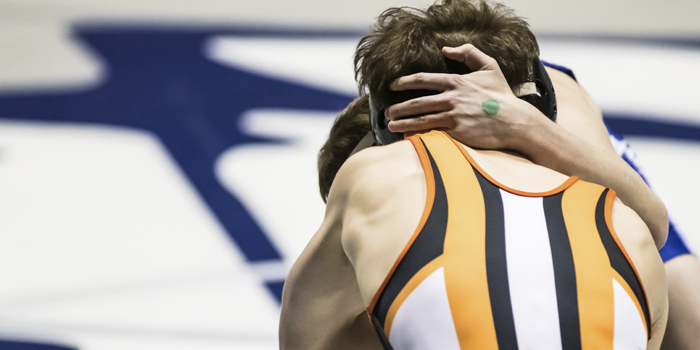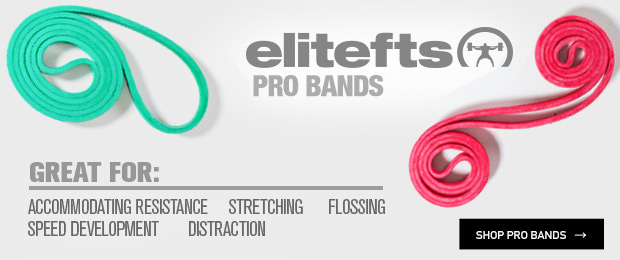
Training the youth athlete is multifaceted. Think about it; there is so much variation in this population due to individual differences (e.g., height, weight, stage of development, "talent," etc.) Furthermore, each youth athlete's environment will be drastically different than the next. Take cultural differences as an example; how a youth athlete's at-home life and culture will impact their social skills, physical capabilities, and more.
So, it's imperative we nail the basics with every athlete and that we do so in a way that is scalable yet progressive. That's why I follow a movement-based system.
All of my athletes follow a push, pull, squat, hinge, and loaded carry model. However, we often deviate and layer in other patterns to improve performance, mitigate injuries, and bolster GPP.
Basic Stability
You've all heard this common phrase relating to stability: you can't fire a cannon out of a canoe. And for the purpose of lifting weights, stability enhances our ability to perform these patterns.
So, by addressing stability first, we can lay a solid foundation to build strength from. I've done this in many ways, and all of them yielded results.
However, I tend to change my mind about what is optimal based on what I see. Charlie Francis has a saying, "If it looks right, it flies right," and with exercise, sometimes individual differences require us as coaches to do something different. By learning other systems, we can better serve our athletes. This coach's eye is developed over time from many hours in the weight room. First, I will give a basic approach that would work for most people.
Take A Deep Breathe
Breathing is where I start with everyone, and it helps twofold. Most importantly, breath is necessary for having a stable spine and abdominal bracing. It also helps calm the athlete down so that they can improve oxygen intake to be more relaxed. People tend to breathe through their mouths and don't optimally use their lung capacity. I have a few drills that I use both spine and in a quadruped position which is used for this.
Then I look at gluteal, abdominal, and shoulder strength. These are almost always weak. By using some simple exercises, it can be quickly established whether they are weak. You need to display the weakness for the athlete for their understanding. Youth athletes will have better buy-in and adherence when they learn and train. This shouldn't be forced and should result from the coach's ability to communicate effectively.
RECENT: Two Hormone Issues That Cause Bloating for Women
For this purpose, one could look at the Andrew Lock 5 as a collection of exercises that can be a test, injury prevention, warm-up, and rehabilitation for the hips and lower back. Similarly, the Lock Shoulder Big 3 builds shoulder stability for pushing and pulling. You need to teach things that will not become irrelevant as they progress. This means that the younger athletes can see the relevance in the older athletes and will help build culture. Culture is what operates in your program without your conscious effort.
Fundamentals Next: The Squat
Next, I dig into the basic patterns mentioned earlier.
The primary squatting exercise is the Goblet Squat. It is easy to teach and helps build qualities for learning other variations. It is also very safe. I put a lot of pride in not harming those I train. This also might be all that an athlete ever needs also.
And as much as I like big numbers, one's proficiency to play a sport is not dictated by their squat numbers. However, it would seem, based on the minds of the coaches that have gone before me, being able to squat well is essential.
The Goblet Squat, because of its relative load, ease of learning, and range of motion, is both a remedial exercise and a technique builder. For those under 80 kilograms, I have a standard of 30 kilograms for twenty reps. For those heavier, it is 40 kilograms. These are the load I found most effective for most people to progress to Front Squats.
The Hinge
For hinging, the issue is a little more complicated. Hamstring strength, or the lack of it, is prevalent among most beginners. Thus, I do not teach a Deadlift or variation as the first exercise for building the hinge.
I take a bodybuilding approach and reduce the chance for my athletes to use their lower backs. The Hamstring Curl with a Swiss Ball is a good beginner exercise as it can be regressed from an extended range glute bridge, then to a glute bridge into a Negative Leg Curl, then finally, the full Hamstring Curl. This is performed by keeping the torso and upper leg in a straight line so the hamstring is being trained at the hip and across the knee.
Negative Nordics are too complex for most people to create enough time under tension to effectively build the hamstring for a beginner. However, once the athlete can do these well for at least 20-30 total reps (3x8, 4x6, 3x10, etc.), Sumo Deadlifting can usually be taught with minimal difficulty. The Romanian deadlift follows shortly after this.
Push and Pull
For pushing, doing a simple Push-Up is the goal. Despite how simple this seems, when I teach the Push-Up, most people find it much more complex than how they previously performed them. I expect that athletes can perform twenty strict Push-Ups irrespective of size.
If they can, they can progress to a Barbell Bench Press. The Incline Bench is easier to teach. However, the flat bench is the standard that keeps people motivated to train. Dips are taught and are presented as a supplementary exercise for the bench or a tricep accessory exercise.
Once the Push-Up strength has been established, overhead pressing variations are introduced. Typically I will teach the One-Arm Kneeling Press, pressing on the same side as the down knee. It serves as an anti-rotation exercise and helps build the torso and hips for standing pressing variations. Hindu Push-Ups, though are the preferred overhead pressing progression. These will improve joint mobility in shoulders, and I have found a high correlation with barbell overhead pressing strength.
Pull strength is started with the Suspension Trainer Row. This can be scaled easily by how close the youth athlete is to the fulcrum. These can be made more accessible for the weakest person through to the most advanced. If they can perform these with the torso 45 degrees to the ground for over ten reps in a set (twenty is a better number), Negative Chin-Ups are introduced. For larger athletes, I might add the Lat Pull Down before negative Chin-Ups. I haven't had that many issues teaching young males to do Chin-Ups, irrespective of size. Females require steps in between to progress to a full Chin-up.
And Carry
The loaded carries for beginners help drive the rest of the program forward. I also include things like crawling in this category. Again, it goes back to what Louie Simmons says about the importance of GPP. Farmer's walks, sled work, and crawling really help those who may not have been exposed to enough variation in movement capacity (load and complexity). This is at least my theory.
As often as a youth athlete starts to plateau or makes prolonged gains in strength from the start, these movements seem to help build a foundation for linear progress to a much higher level. I find, for whatever reason, this seems to be most apparent in younger populations, and I suspect it is due to how we were raised compared with older generations of people.
All these exercises can be scaled for beginners to the most advanced trainees and will help provide a foundation for a plethora of variations.
Header image credit: tnettleton © 123rf.com

Vijay Panchia is a strength and conditioning coach and personal trainer, having worked in the industry for fifteen years. His clientele has ranged from an aging population to international-level athletes, and he spent six years working at one of Australia's most prestigious private high schools. He has been accredited as an Australian Strength and Conditioning Association Level 2 Professional Coach. Outside of exercise, Vijay has spent more than fifteen years training in martial arts, holding a blue belt in Brazilian Jiu Jitsu from 3 times world champion Steve Maxwell. Vijay has trained amateur and professional Muay Thai fighters as well.










Really enjoyed reading your article, you have provided a well developed system for young athletes to start lifting with a client centred approach.